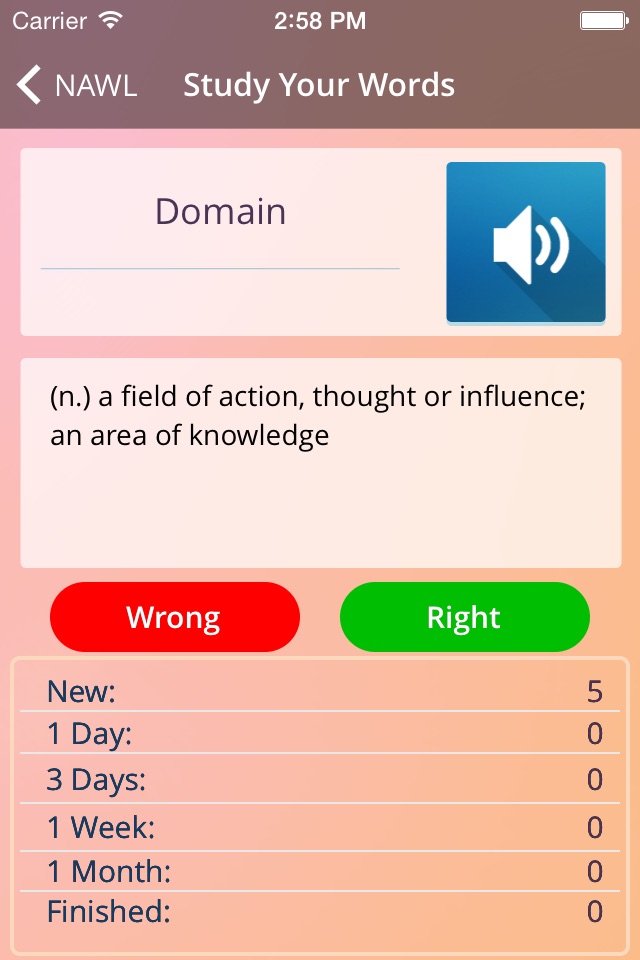
NAWL Builder:
This application is designed to help learners and teachers make use of one of the most important lists of academic vocabulary words for second language learners of English, the New Academic Word List (NAWL). The list is open source and is used with permission of the authors.
The app contains simple tools to help you download, email and organize the NAWL, as well as science-based study tools to quickly and efficiently learn the words, keep detailed record of your progress and the ability to email your progress to yourself or a teacher.
The original definitions are written in simple English and the app also give you pronunciation of each word by a professional voice talent who is a native speaker of English of North American English.
About the NAWL:
The first version of the New Academic Word List (NAWL 1.0), published by Dr. Charles Browne, Dr. Brent Culligan is finished and available at the following link (www.newgeneralservicelist.org). The list is available in alphabetical order, with inflected forms, and with Standard Frequency Indices (Carroll, Davies, & Richman, 1971; Carroll, 1971).
How many words are in the NAWL?
The NAWL is a list of 963 words derived from an academic corpus containing about 288 million words.
What are the components used in building the corpus?
The first major component of the corpus is the Cambridge English Corpus. This corpus is comprised of academic journals and non-fiction, student essays, and academic discourse. According to Cambridge English Corpus website, the corpus includes “text from academic books and journals from the UK and US covering a wide range of disciplines and topics.” This part of the Corpus contained about 249 million words and yielded a single word list with frequencies.
The rest of the corpus was assembled from other sources. The oral part of the corpus used was compiled from two corpora of spoken English, the Michigan Corpus of Academic Spoken English (MICASE), and the British Academic Spoken English (BASE) corpus. These corpora were put together and re-sorted into four categories, namely Arts and Humanities, Life Sciences, Social Sciences, and Physical Sciences, giving four separated word lists and frequencies.
The third and final part, Textbooks, was assembled from a corpus of published textbooks including many of the top 100 best-selling textbooks. The textbooks were also divided into the same four categories as the spoken English corpus and generated four word lists with frequencies.
The steps to get the list were as follows. The final corpus was analyzed using procedures outlined in Carroll, Davies, and Richman (1971) and Carroll (1971) to obtain D, an index of dispersion over the nine word lists, U, an adjusted estimation of the occurrence of the word frequency per million, and the SFI, the Standard Frequency Index. The words from the New General Service List (NGSL) were accounted for and a list of candidates was selected based on frequency, dispersion, and appropriateness.
About Intelligent Flashcards:
The app also contains an Intelligent Wordlist Maker and Intelligent Flashcard system.
The Intelligent Wordlist Maker helps you to quickly and efficiently pick only the words you don’t know for study in the flashcard system. Rather than force you to go through the entire list at once, Intelligent Wordlist Maker guides you through the list by frequency bands, allowing you to add words little by little, just as you need them or when you have time.
Based on the well documented science of “spaced-repetition”, the Intelligent Flashcard system systematically and efficiently helps you to review the words several times over a period of a month, giving you extra time with the words that are giving you difficulty.
References
Carroll, J. B. (1971). Statistical analysis of the corpus. In The American Heritage Word Frequency Book (pp. xxi – xl). Boston: Houghton Mifflin.



